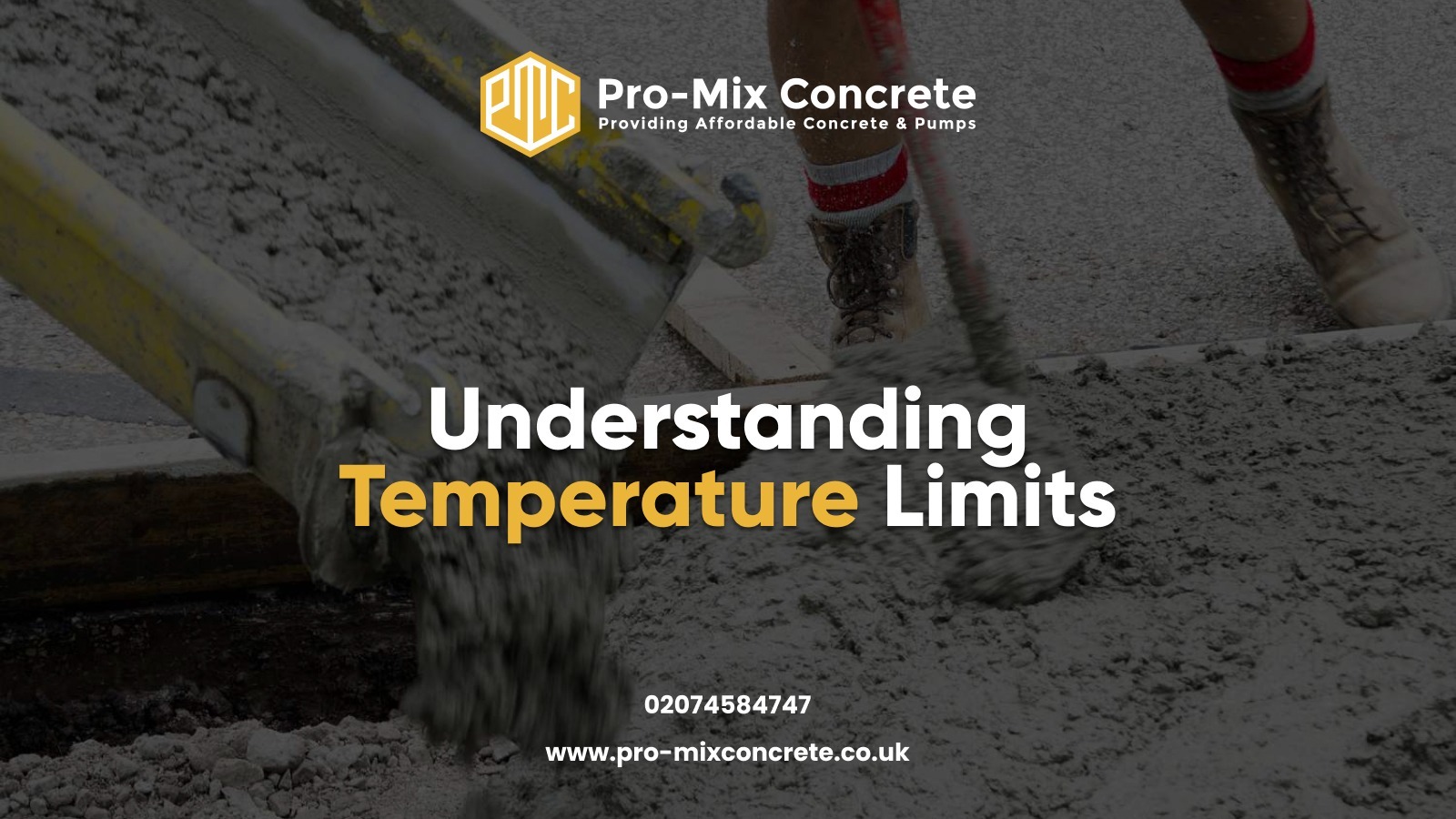Concrete pouring in hot weather can pose challenges requiring careful planning and execution. High temperatures can accelerate hydration, leading to rapid setting and reduced workability. This can cause water loss, affecting the curing process. By managing the temperature limits, contractors can take necessary precautions and implement strategies. They can optimize the performance of concrete in hot weather conditions.
Factors Affecting Concrete Performance in Hot Weather
- One of the major consequences of pouring concrete in a hot climate is the effect of heat on the hydration process. This process is a chemical reaction in which water combines with cement particles. It forms calcium silicate hydrate (C-S-H) gel and other compounds that provide concrete with resilience and durability. Moreover, this reaction is crucial for the hardening and setting of concrete.
- Also, temperature plays a significant role in this process. Both high and low extremes can impact the rate at which hydration occurs. High ambient temperatures during concrete placement can hasten the setting time. Additionally, this makes it challenging for contractors to properly work with the material. The accelerated setting lessens the available time for placing and finishing operations. However, it necessitates prompt execution.
- Besides, rapid evaporation and water loss are critical concerns. The scorching heat speeds up moisture evaporation from the concrete surface. It can lead to plastic shrinkage cracks and reduced bond strength. Moreover, it causes irreversible surface defects. The water loss can affect the mix proportions. It may alter the desired concrete properties, making achieving the intended design specifications difficult.
Consequences of Not Following Temperature Limits
Defining specific temperature thresholds is paramount to guiding concrete pouring practices. Concrete placement in hot weather should occur within an ideal temperature range. Failure to comply with the recommended temperature limits can lead to various consequences. Exceeding the upper-temperature limit may result in the following:
- A rushed setting
- Restricted manoeuvrability
- Increased risk of thermal cracking
- Compromised long-term durability
Falling below the lower temperature limit can hinder the hydration process, leading to the following:
- Delayed strength gain
- Potential frost damage in extreme cases
Effects of High Temperatures on Concrete
- The accelerated rise in temperature causes differential expansion and contraction. It happens when concrete is exposed to high temperatures. Moreover, this thermal gradient creates internal stresses, resulting in cracks.
- Additionally, the searing heat can also reduce the flowability of concrete. To eradicate such complications, contractors may need to adapt their construction practices. It could be using additives or adjusting the mix proportions.
- Also, it can contribute to an increased likelihood of early-age cracking. The resulting thermal gradients within the concrete can induce tensile stresses. This is true, particularly for ill-managed thermal fluctuation. Mitigating the risk of such cracking requires careful consideration of diverse factors.
Frequently Asked Questions
In light of the distinctive challenges and considerations associated with pouring concrete in hot weather, numerous frequently asked questions arise.
Is it better to pour concrete in summer or winter?
Whether to pour concrete during summer or winter depends on several factors. It can include the local climate and project specifications. Moreover, opting for summer allows for quicker curing, but it necessitates implementing measures to manage rapid setting and decreased water presence.
Also, winter provides a more extended working period. But, precautions must be taken to protect against freezing temperatures and potential frost damage.
How do you keep concrete cool in the summer?
One can implement several measures to mitigate the effects of hot weather on concrete.
- Firstly, incorporate chilled water or ice into the mixing process. It helps keep the concrete temperature lower.
- Secondly, providing shade or temporary covers shields the concrete from direct sunlight. Further, it reduces the risk of rapid setting and loss of water content.
- During the curing stage, spraying a fine water mist promotes evaporative cooling. Besides, it helps maintain an optimal temperature for curing in hot weather.
Should you pour concrete in the summer?
Pouring concrete in the summer has its pros and cons. The pros are that higher temperatures facilitate faster curing of concrete. Longer daylight hours also provide a longer window for working with the concrete. Moreover, the cons include the risks of deteriorated concrete quality due to:
- Expedited setting
- Thermal disparities
- Escalated moisture evaporation
What is the best month to pour concrete?
The best month to pour concrete depends on the local climate and project requirements. However, late spring and early fall are generally favourable due to milder temperatures and lower humidity.
You are advised to consult with concrete professionals. Moreover, they may help in determining the optimal month based on specific circumstances.
Are there any recommended time frames for pouring concrete in hot weather conditions in the UK?
There are no specific universally recommended time frames for pouring concrete in hot weather conditions in the UK. Further, it is best to pour during the cooler periods of the day. It meant early morning or late evening.
Making certain that the concrete temperature stays below 32°C (90°F) and above 5°C (41°F) helps prevent prompt solidification.
Bottom Line
With careful planning, diligent execution, and a commitment to continuous improvement, the challenges of pouring concrete in hot weather can be overcome. Moreover, it can lead to outstanding results and client satisfaction.
Don’t let hot weather hinder your concrete pouring project. Choose Ready Mix Concrete London for reliable concrete solutions that exceed climate constraints! We possess our advanced techniques and commitment to excellence. Our staff delivers durable and flawless concrete solutions, no matter the conditions.
